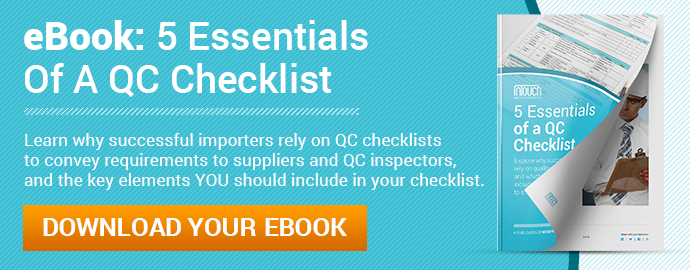Ecommerce sales have skyrocketed in 2020 and many companies are struggling with quality control issues. This article will explain the importance of improving ecommerce quality control and provide some best practices. From simple steps like a product inspection to thorough overhauls of your supply chain, there's lots of space to improve your brand's quality control and profitability.
Best Practices for Improved Ecommerce Quality Control
1. Always Start With an Approved Sample
If a sample doesn’t reflect your requirements, the process of turning it into a product won't go quite as planned. Quality control begins with a sample. You should ensure that your samples stand as gold standards before you use them to make more products.
Alongside approving a sample, you'll also need to draw up and maintain specifications for your products. This helps ensure consistency as each product is made.
2. Conduct a Factory Audit
Before you agree to work with a potential supplier, make sure to conduct an audit of their factory and processes. Hiring a professional auditor to conduct a supplier audit can help you identify any potential problems and manage your expectations. Examples of things your inspector will investigate include:
- Factory profile and experience
- Employee workforce
- Facilities, machinery, and equipment
- License and certifications
- Quality management system
The results of a factory audit will tell you how your supplier operates and what kind of quality you can expect - or not expect - from your potential supply chain partner.
3. Get Aligned on Expectations
Your supplier is not a mind reader. Never assume that they know what your standards are unless you have made them explicitly clear.
It’s important to communicate and get aligned on expectations from the very beginning of your relationship. You should also have exact specifications documented somewhere that both parties can easily access. Don’t use vague terms or general descriptions either; It’s important to be specific.
Examples of how to communicate specifications to your supplier include:
- Make sure to state the exact color. This means stating a specific shade and even referencing the pantone code.
- Provide exact dimensions. For example, state 2.54 inches instead of 2.5 inches.
- List out the specific materials to be used for each component. Aligning on an approved Bill of Materials (BOM) is a good way to do this.
Making sure both parties know exactly what the expectations are can help prevent or reduce quality control issues down the line.
4. Perform Ongoing Testing
Quality control is an ongoing process that you’ll need to stay on top of as long as you are doing business. Just because you conducted a factory audit and set clear expectations doesn’t mean everything will go smoothly from here on out.
You’ll want to conduct ongoing tests to ensure your product quality is up to standard. This includes the following:
- Order your own product and perform a self-inspection.
- Make sure the product itself, as well as the packaging, meets specifications.
- Perform safety tests to ensure your product is safe.
You might be perfectly happy with your product and supplier, but that doesn’t mean things won’t change. It’s important to stay vigilant and catch defects before your customers do.
Asia Quality Focus: A User-Friendly Approach to Quality Control
At the end of the day, quality control issues will always come back to you, not your supplier. This is why it is important for ecommerce brands to take a proactive approach to quality control and exceed customer expectations for the sake of protecting their reputation.
At Asia Quality Focus, we leverage more than a decade's worth of experience to help global customers achieve quality control. Learn more about our approach to manufacturing quality control in this FREE QC Checklist!







